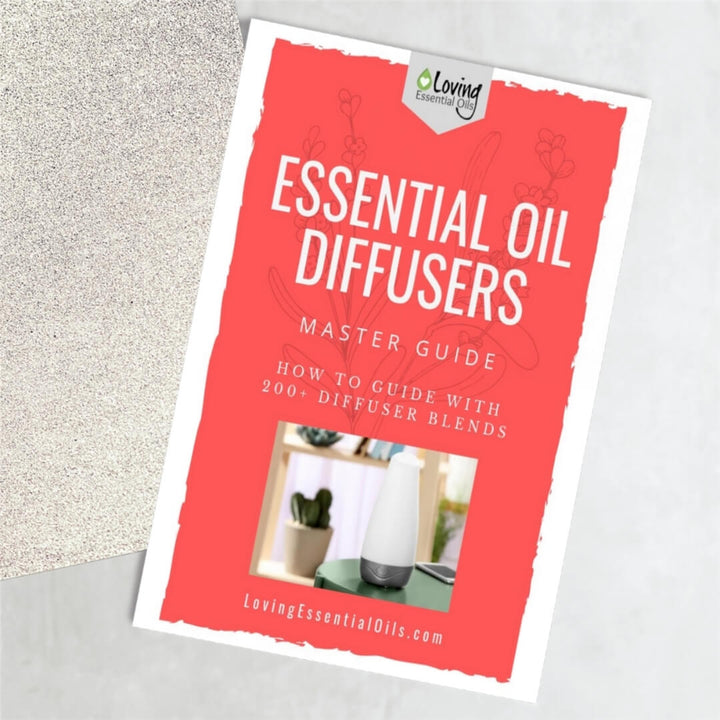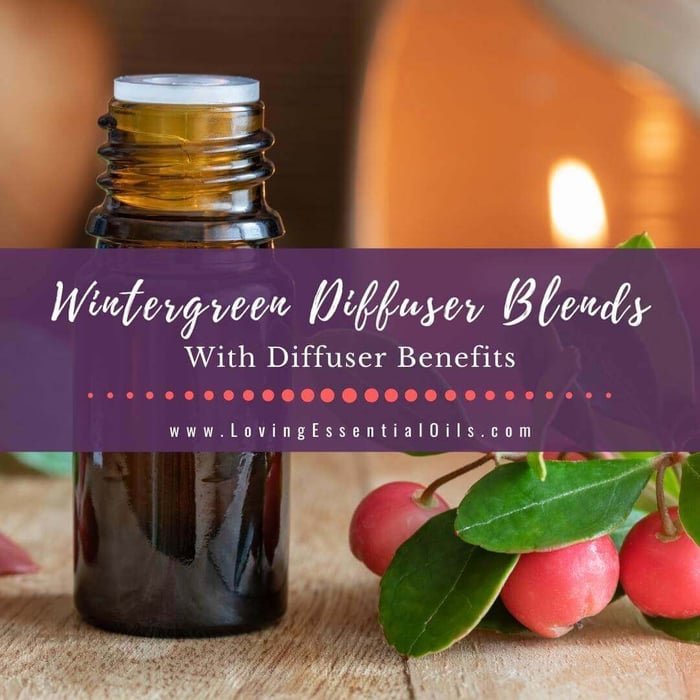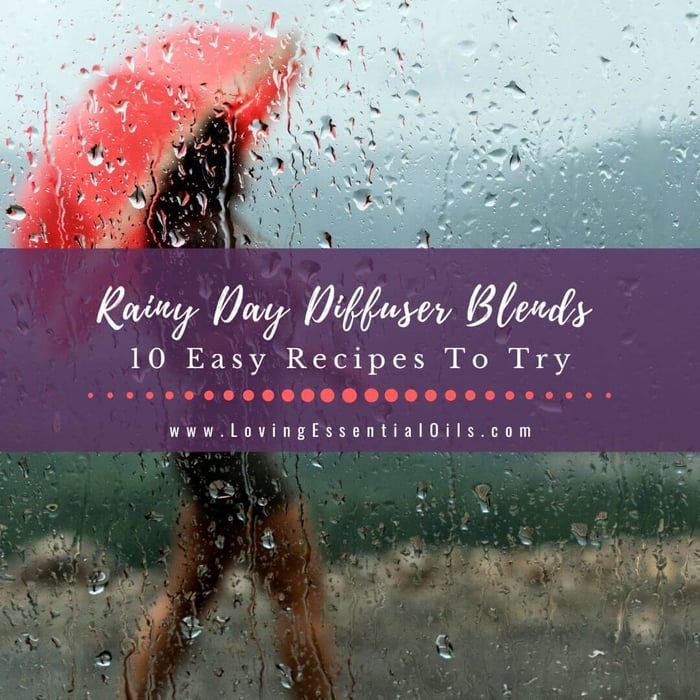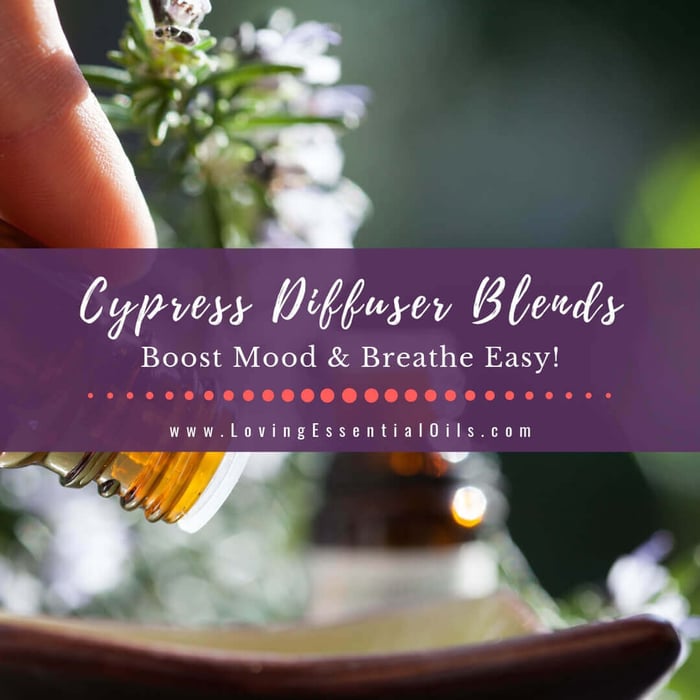Table of Contents
If you are looking for a fresh, minty scent, then wintergreen essential oil is a great option to consider. Give this oil a try in these wintergreen diffuser blends.
Wintergreen essential oil has been used in products designed to relieve pain and inflammation, like pain relief blends. It is also known to be a powerful antiseptic, making it a commonly used ingredient in mouthwash, chewing gum, and toothpaste.
We'll explore the diverse benefits that wintergreen essential oil provides, from invigorating your senses to creating a calming environment. Each wintergreen diffuser blend is crafted to deliver unique benefits, whether easing respiratory issues or simply refreshing your space.
Additionally, we’ll cover essential safety tips to ensure you can enjoy using wintergreen oil safely and effectively.
Wintergreen Essential Oil Facts
The wintergreen plant has been used medicinally by Native Americans for centuries. The name "wintergreen" comes from the fact that the plant stays green all winter long. Nowadays, this characteristic is more frequently described using the term evergreen.
Wintergreen possesses a powerful "minty" aroma, but Gaultheria species are not true mints, as true mints are classified under the Mentha genus. This oil provides natural relief for muscle pain and has properties that support respiratory health.
Wintergreen comes with some safety precautions to take note of below.
- Botanical Name:Gaultheria procumbens
- Botanical Family: Ericaceae
- Aroma: Sweet, minty, fresh
- Extraction Method: Steam distilled
- Plant Part Used: Leaves
- Blending Note: Middle to Top
- Max Adult Dilution: 2.4%
- Shelf Life: 4-5 years
- Kids: Not recommended
- Pregnancy: Not recommended
Wintergreen Oil Safety Precautions
Keep out of the reach of children and pets; it may smell like candy to them, causing them to ingest it, which is toxic!!
Wintergreen contains methyl salicylate, which can be toxic in large amounts; avoid use during pregnancy, breastfeeding, and with young children. Not safe for internal use.
The maximum dilution for wintergreen essential oil is up to 2.4%, which equates to about 14 drops per ounce of carrier oil. Get our printable essential oil dilution chart.
*Wintergreen may prevent platelets from clumping together and can intensify blood-thinning effects. Avoid usage around surgery times, while on anticoagulants (like coumadin), or if you have bleeding disorders or a sensitivity to salicylates, as there may be potential drug interactions.
In moderation, wintergreen oil can add a pleasant, cooling sensation to blends. When used in excess, it can overwhelming and harsh. As a result, it is important to exercise caution when blending with this oil.
What is Wintergreen Essential Oil Good for?
Wintergreen essential oil is a powerful remedy that offers a multitude of benefits. Just a small amount can go a long way. When applied topically, it works wonders in relieving pain and soreness while promoting muscle recovery.
Its anti-inflammatory properties also provide relief for joint discomfort. If diffused, Wintergreen can help soothe headaches and migraines. On top of that, its minty aroma has a refreshing and energizing effect.
Wintergreen Essential Oil Diffuser Benefits
Wintergreen essential oil has a refreshing, minty, uplifting scent.
- Mixing it with peppermint and eucalyptus oils can create a refreshing blending.
- Wintergreen oil can also be used in diffusers to help clear congestion and promote easy breathing.
- When diffused with citrus oils like lemon or grapefruit, wintergreen oil can also help to boost energy levels and improve focus.
- When combined with lavender oil, it can help to disinfect the air and leave your home smelling fresh and clean.
As you can see, wintergreen essential oil is powerful and can be used in many different ways.

Wintergreen Essential Oil Emotional Benefits
Wintergreen oil can be used aromatically to enhance emotional and spiritual well-being. It helps us to let go and surrender control while trusting the flow of life. When used in aromatherapy, this essential oil can help to improve mental clarity and focus.
Emotional benefits of wintergreen essential oil include:
- Feelings of being relaxed
- Decreased feelings of anxiousness and tension
- Improved ability to concentrate
- Allows us to let go of old beliefs and pains
In addition, wintergreen essential oil has a refreshing, minty scent that can help to boost energy levels and improve mood.
Wintergreen Blends Well With
Wintergreen essential oil is a popular choice for aromatherapy due to its refreshing, minty scent. It can also create massage oil blends, homemade perfumes, colognes, and diffuser blends.
Some essential oils that blend well with wintergreen include:
- Eucalyptus
- Peppermint
- Tea tree
- Lavender
- Chamomile
- Lemon
- Grapefruit
Wintergreen oil can also be used to add a touch of sweetness to blends. When paired with citrus oils such as lemon or grapefruit, wintergreen oil can help to create a bright, uplifting scent.
Wintergreen Diffuser Blends
Wintergreen Diffuser Blends are a great way to enjoy the benefits of essential oils without applying them topically. I like to use a 100 to 200 ml water tank ultrasonic diffuser, but you can use whatever size you prefer. It is best to diffuse in 30-minute intervals to not overwhelm the space and your senses.
Read more about diffusing essential oils.
1. Healing Diffuser Blend with Wintergreen
There's nothing like coming home to a relaxing, healing diffuser blend. The perfect way to unwind after a long day, this healing blend can help uplift your emotions and possibly allow you to drift off into a restful sleep.
- 3 drops Frankincense
- 3 drops Geranium
- 2 drops Wintergreen

2. Hypnotic Diffuser Blend
Looking for a blend to help you relax before bedtime or one to use during meditation? Breathe in deep - it's time to relax and let the hypnotic effects of essential oils work their magic. Lavender and sandalwood essential oils are known for their calming properties. They make this wintergreen diffuser blend an easy and natural way to promote relaxation.
- 4 drops Sandalwood essential oil
- 2 drops Lavender essential oil
- 1 drop Wintergreen essential oil

3. Winter Warmth Diffuser Blend
Wintergreen essential oil blends well with spice oils, such as cinnamon and nutmeg. Try diffusing this DIY recipe for winter warmth.
- 3 drops Wintergreen oil
- 2 drops Cinnamon Leaf oil (or Bark)
- 2 drops Nutmeg oil

4. Man Cave Blend
This oil blend combines favorite manly scents like cypress and wintergreen. This diffuser blend creates a woodsy and masculine atmosphere.
- 2 drops Cypress
- 2 drops Wintergreen
- 2 drops Balsam Fir
- 2 drops Blue Spruce

5. Candy Cane Lane
Create a refreshing, invigorating scent that's a sweet treat. Wintergreen and peppermint essential oils have various benefits, including boosting energy levels and aiding concentration. The Vanilla and cinnamon add a warm and sweet fragrance to the blend.
- 2 drops Peppermint
- 2 drops Wintergreen
- 2 drops Vanilla
- 1 drop Cinnamon

6. Alpine
Experience a refreshing and invigorating aroma that combines the crispness of wintergreen, the uplifting citrus notes of bergamot, and the grounding warmth of cedarwood. This blend rejuvenates the senses, promotes mental clarity, and brings a touch of the serene alpine wilderness into your space.
- 3 drops Bergamot
- 3 drops Wintergreen
- 2 drop Cedarwood

7. Refreshmint
Enjoy a revitalizing burst of freshness with this blend, featuring eucalyptus's cooling sensation, peppermint's crispness, and a hint of wintergreen. This combination creates an invigorating and rejuvenating ambiance, perfect for clearing your mind and uplifting your spirits.
- 5 drops Eucalyptus
- 3 drops Peppermint
- 1 drop Wintergreen

8. Refreshing
This blend offers a revitalizing and invigorating aroma, with the cool, crisp scent of peppermint complemented by the grounding, woody notes of arborvitae, and the refreshing hint of wintergreen. It creates an uplifting and rejuvenating ambiance, perfect for clearing the mind and energizing any space.
- 3 drops Peppermint
- 2 drops Arborvitae
- 2 drops Wintergreen

9. Into the Woods
Immerse yourself in the earthy tranquility of a pristine forest with this blend. The fresh, woody scent of cypress pairs seamlessly with the revitalizing aroma of wintergreen and the crisp, invigorating notes of fir, creating a refreshing and grounding atmosphere reminiscent of nature's embrace.
- 2 drops Cypress
- 2 drops Wintergreen
- 2 drops Fir (any type)

10. Root Beer Float
Indulge in a nostalgic treat with this delightful blend. The sweet and vibrant combination of wintergreen and vanilla evokes the classic, creamy sensation of a beloved root beer float, filling your space with a warm, comforting aroma.
- 3 drops Wintergreen
- 3 drops Vanilla

Spearmint vs Peppermint vs Wintergreen
Spearmint, peppermint, and wintergreen are three essential oils often used in aromatherapy and personal care products, each offering unique benefits and characteristics.
Spearmint (Mentha spicata) has a sweet and mild aroma, making it a milder alternative to peppermint. It has a high carvone content, giving it a softer peppermint scent. It's often used for digestive support and to invigorate the mind without the intense menthol sensation.
Peppermint (Mentha × piperita) is more robust, with a high menthol content, which provides a strong, cooling sensation and energizing aroma. It is widely recognized for enhancing respiratory function, alleviating headaches, and soothing muscle pain.
Wintergreen (Gaultheria procumbens), not from the mint family, possesses a sweet, minty, and fresh aroma due to its high methyl salicylate content, which offers anti-inflammatory and analgesic properties commonly used in pain relief applications. Wintergreen must be used cautiously due to its potent nature and potential toxicity in large amounts.
Understanding the differences between these oils can help you choose the right one for specific therapeutic or aromatic needs.
Essential Oil Diffusers - How To and Recipes Guide

$ 9.99
Essential Oil Diffuser - How To Guide for Diffusing How To Guide for Aromatherapy Diffusing With 200+ Diffuser Blends Diffusion. If you have ever been around anyone who loves using essential oils, chances are you have heard this world before.… Read More
Wintergreen Essential Oil Substitutes
Here are some essential oils that can serve as substitute oils for Wintergreen essential oil, along with reasons why they are good alternatives:
Peppermint (Mentha × piperita): Peppermint oil contains menthol, which provides a similar cooling and invigorating sensation. It is also effective in relieving muscle pain and headaches, making it a versatile alternative to wintergreen.
Eucalyptus (Eucalyptus globulus): Eucalyptus oil has strong anti-inflammatory and analgesic properties, similar to Wintergreen. Its fresh, camphoraceous aroma is also ideal for respiratory support and can help relieve pain.
Camphor (Cinnamomum camphora): Camphor oil shares many of Wintergreen's pain-relieving and anti-inflammatory qualities. Its potent cooling effect makes it effective for sore muscles and joint pain.
Birch (Betula lenta): Birch oil contains high levels of methyl salicylate, just like wintergreen, giving it similar analgesic and anti-inflammatory properties. It is an excellent alternative for relieving muscle and joint discomfort. Birch oil has a similar sweet and minty scent, making it a good alternative for those who enjoy the refreshing aroma of wintergreen.
It's important to note that birch essential oil should be used with caution as it can be strong and potentially irritating to the skin if not properly diluted. Doing a patch test before using any new essential oil is recommended.
Using Wintergreen Essential Oil for Pain Relief
Wintergreen oil is renowned for its remarkable ability to soothe pain and reduce inflammation. For headaches, diffuse 3-6 drops of Wintergreen in an essential oil diffuser.
While wintergreen diffuser blends smell excellent, topical use is a great option for pain relief.
To use topically, dilute it to a 2% concentration by combining 12 drops of Wintergreen with 1 ounce of carrier oil or unscented lotion. Alternatively, add 2 drops to a 10 ml roll-on bottle and fill it with carrier oil. Apply this mixture topically to the affected area.
More About Wintergreen Essential Oil
What is the aromatic profile of wintergreen essential oil?
The aromatic profile of wintergreen essential oil is characterized by a sweet, minty scent that is refreshing and invigorating. It is similar to the aroma of mint candies and is often used for its uplifting and mood-enhancing properties.
Can wintergreen essential oil be mixed with other oils for diffuser blends?
Yes, wintergreen essential oil can be effectively mixed with other oils, such as lavender, peppermint, or lemon, to create a balanced scent in diffuser blends. These combinations can enhance the overall aromatic experience and provide additional therapeutic benefits.
What is the difference between Wintergreen and Peppermint?
Wintergreen and peppermint's main difference is their aroma profiles. Wintergreen is derived from a plant called Gaultheria procumbens, whereas peppermint comes from the Mentha piperita plant. Wintergreen has a sweet and minty scent with a hint of fruity notes, while peppermint is characterized by its strong, cool, and refreshing minty scent.
Is it safe to ingest Wintergreen essential oil?
Ingesting Wintergreen essential oil is NOT recommended, regardless of the brand. Ingestion can lead to adverse reactions, such as medication contraindications, irritation of the mucous membranes, sensitization, nausea, or worse.
The most effective ways to utilize essential oils are inhalation and topical use. If you desire to take essential oils internally, it is strongly advised to consult with a knowledgeable professional with experience in internal use.
Is Wintergreen essential oil safe to use?
Yes, Wintergreen essential oil is safe when used as directed, and safety precautions are followed. It is not recommended for use on young children, pregnant or nursing individuals. It is important to note that it should not be used at concentrations higher than 2.4%, which translates to a maximum of 14 drops of Wintergreen per ounce of carrier oil.
Wintergreen has the potential to inhibit platelet aggregation. Individuals taking blood-thinning medications like warfarin, aspirin, heparin, etc, as well as those with hemophilia and bleeding disorders and those who have recently undergone or are about to undergo surgery, should avoid using Wintergreen.
Enjoy the wintergreen diffuser blends, happy oiling!
Share on Pinterest

Essential Oil Diffusers - How To and Recipes Guide

$ 9.99
Essential Oil Diffuser - How To Guide for Diffusing How To Guide for Aromatherapy Diffusing With 200+ Diffuser Blends Diffusion. If you have ever been around anyone who loves using essential oils, chances are you have heard this world before.… Read More






